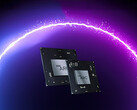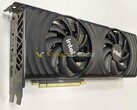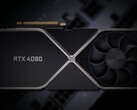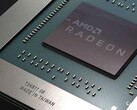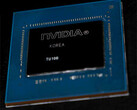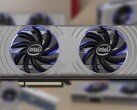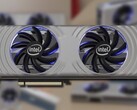Recently, we have seen information about how Intel is likely to segment the Arc Alchemist DG2 lineup. Intel is expected broadly classify Arc Alchemist offerings into SOC1 and SOC2 lineups that target a broad range of competitor GPUs such as from the Nvidia GeForce MX450 on laptops all the way to the RTX 3070 on desktops. Now, we are getting to know the likely marketing nomenclature of Arc Alchemist cards thanks to information from Intel's own driver.
Intel's test driver version 30.0.101.9999 contains references to five Arc Alchemist cards viz. the Arc A380, Arc A350, Arc A370M, Arc A350M, and Xe A200M. We have seen the Arc A380 referenced in a benchmark leaked by TUM_APISAK before, so this particular naming scheme is very well legit. Also, the Arc A380 in that leak was shown to feature 6 GB VRAM, but we know that Intel has up to 16 GB offerings on the anvil.
That being said, the above GPUs aren't the only ones that Intel would be offering next year. The naming scheme suggests that the A3xx series would pertain to the entry-level models. We expect to see at least five variants each with 512, 384, 256, 128, and 96 execution units (EUs). While SOC1 would be comprised of GPUs with 512, 384, and 256 EUs, SOC2 will include 128 and 96-EU SKUs.
Performance numbers with Arc Alchemist are anybody's guess at this point. We expect to see more leaks in the run up to launch. However, Intel seems to be already focusing on Arc Alchemist's successor, Arc Battlemage codenamed DG3 Elasti.
According to information from YouTuber Tom from Moore's Law is Dead, who's had considerable success in leaking Arc-related information so far, Arc Battlemage will aim straight for the upcoming top dogs from Nvidia and AMD. Arc Battlemage may very well transition to a multi-GPU architecture similar to what is being expected from AMD RDNA 3.
Apparently, Intel wanted to go all guns blazing with DG2 but efficiency issues led them to do an "RDNA 1" with DG2. Besides, we are also hearing that the 256-EU Alchemist part will be a straight 50% slice from the top-end 512-EU chip as Intel wants does not want to have any low-performing tiers in the entire lineup. Any low-clocking chips would get an EU cut and get transferred to the next lower tier. This explains why the company wanted to test waters with mid-range cards first before venturing into flagship dGPUs.
Of course, this is just preliminary information and things are not entirely set in stone at this point. But the learnings from Arc Alchemist will be extremely valuable for Intel if they indeed have plans to disrup the flagship dGPU space with Battlemage in 2023.





